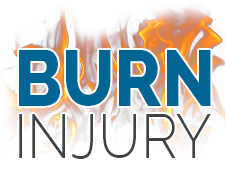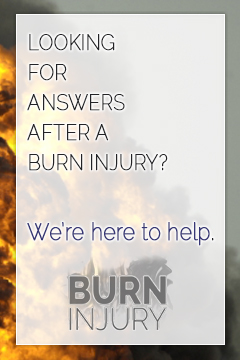First Degree Burn
First degree burns only affect the outer layer of skin, or the epidermis, and do not require medical attention in most cases. Also called superficial burns, first degree burns can often be prevented by taking precautions. Redness, pain, and swelling are common symptoms of a first degree burn, and in some cases skin will start to peel.
First Degree Burn Causes
One of the most common causes of first degree burns is overexposure to ultraviolet light. This is usually caused by the sun, but can also be caused by heat lamps, tanning beds, or other sources of ultraviolet light. Applying sun block, wearing protective clothing, and avoiding prolonged exposure to ultraviolet light can all help to prevent sunburns.
First degree burns can also be caused by exposure to flames, scalding liquid, certain chemicals, electricity, and other causes. These types of burns may be painful, but the pain will often subside when ice or cold water is applied. As with sunburn, skin may peel when the burn starts to heal, but blistering will not be evident and may indicate a more serious burn.
Treating First Degree Burns
First degree burns can usually be treated at home. Ointments and cool compresses may help to relieve pain and keep skin cool, which will promote healing. Oils and butter should not be used to treat a burn, as they may prevent the body from healing the area.
The burn should also be kept clean and free from debris to prevent infection. Depending on the placement of the burn, bandages may be helpful. First degree burns can take anywhere from three to 20 days to heal, depending on the size and type of burn and the treatment methods that are used.
Seeking Medical Treatment
In some scenarios, it may be necessary to seek medical treatment for first degree burns. If the burn covers a large area of the body, the patient may require medical attention to avoid complications. The skin is the body’s largest defense against viruses and bacteria, and burns that cover large portions of the skin can leave the patient susceptible to infection.
Delayed Healing
First degree burns that are not healing properly may also require medical attention. If it has been more than twenty days, and the burn is not showing signs of healing, there may be complications with the immune system that are preventing the healing process. Burns that are worsening instead of healing or showing signs of infection should also be treated by medical professionals.
Sources:
“Burns.” Medline Plus. U.S. National Library of Medicine, 13 Jan 2010. Web. 19 Dec 2013. <http://www.nlm.nih.gov/medlineplus/ency/article/000030.htm>.
“Classification and Treatment of Burns .” Lucile Packard Children’s Hospital at Stanford. Lucile Packard Children’s Hospital, n.d. Web. 19 Dec 2013. <http://www.lpch.org/DiseaseHealthInfo/HealthLibrary/burns/classify.html>.
“First Degree Burns.” Healthline. Healthline Networks, 25 Jul 2012. Web. 19 Dec 2013. <http://www.healthline.com/health/first-degree-burn>.













